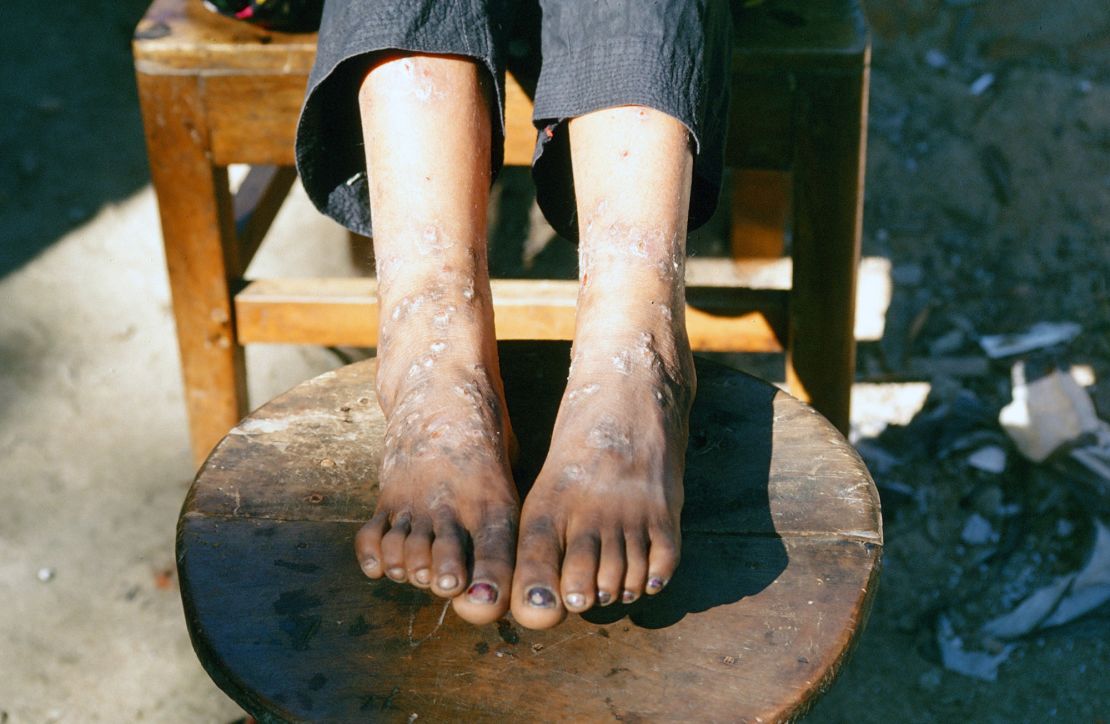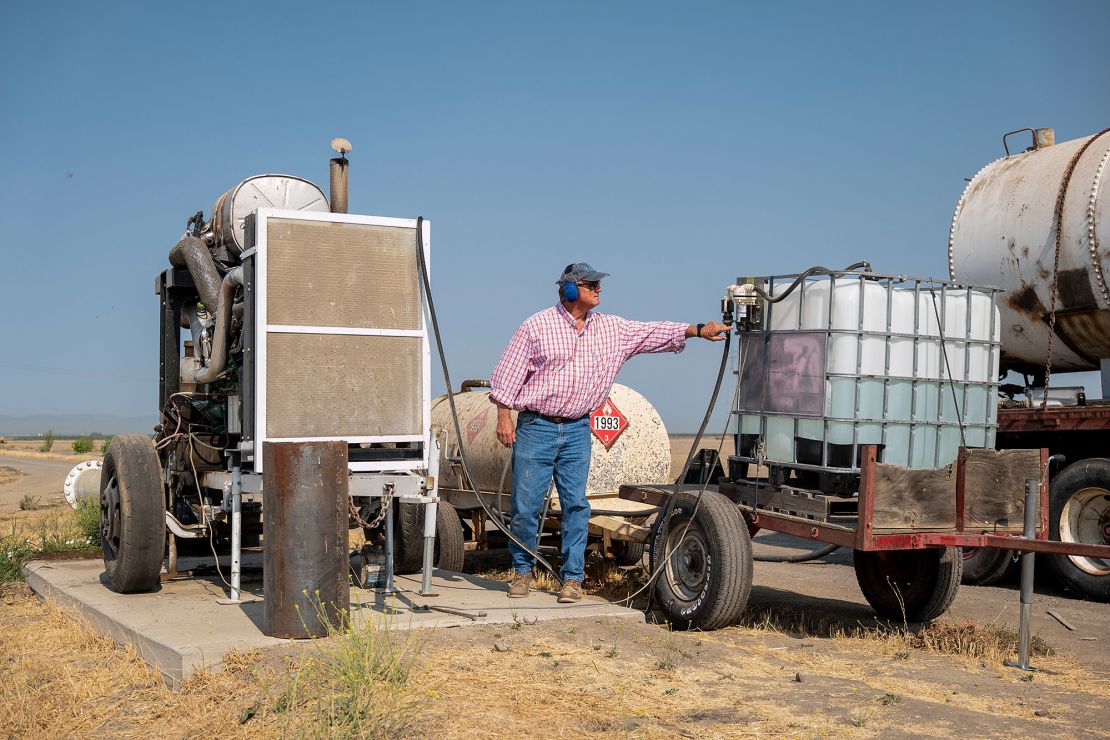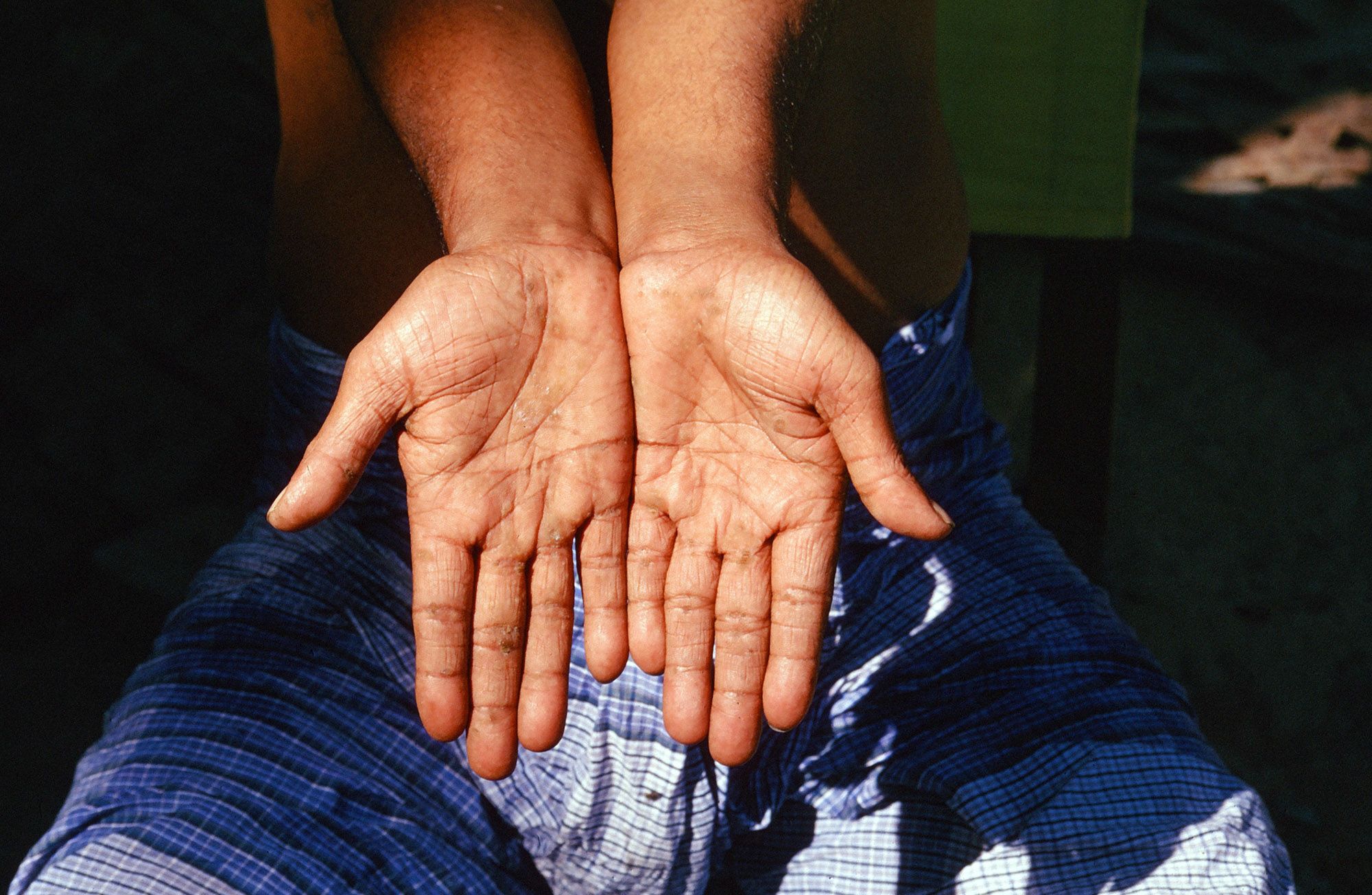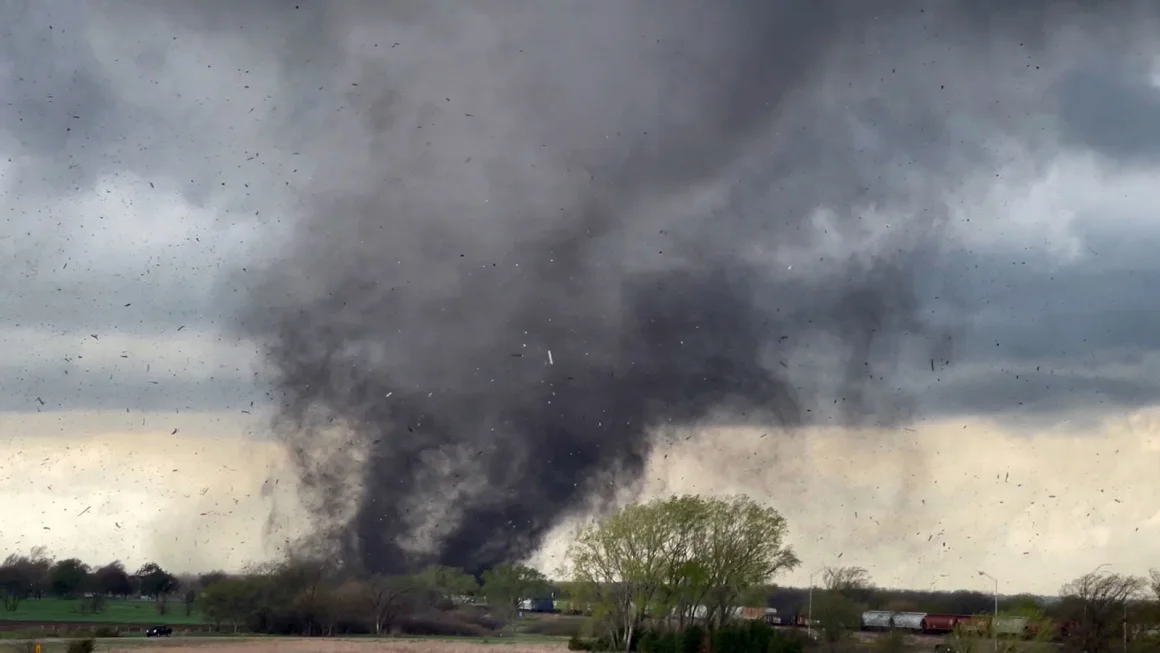CNN — It started with spots dappled across people’s chests and backs. Unusual hard patches on the skin of their palms and soles of their feet. For some, a blackening of their toes.
Doctors and researchers began noticing patients in Bangladesh presenting with these kinds of symptoms in the 1980s. It soon became clear what they were seeing: classic signs of arsenic poisoning.
In a tragic irony, the reason was eventually traced back to an otherwise hugely successful public-health program.
In the 1970s, children in Bangladesh were dying in high numbers from diseases such as dysentery and cholera after drinking dirty water from rivers, lakes and streams. In response, Bangladesh’s government, along with aid agencies spearheaded by UNICEF, launched a huge effort to tap into cleaner water underground.
Over the next two decades millions of tube wells — narrow pipes drilled to relatively shallow depths — were sunk into the earth. “Within one generation (they) changed the drinking water behavior of an entire population,” said Seth Frisbie, a chemist and professor emeritus at Norwich University, who has spent decades researching arsenic contamination.
The numbers of children dying dropped significantly. Yet by the 1990s it had become clear the project had failed to account for one enormous and deadly problem: much of the groundwater contained sky-high levels of arsenic, a known carcinogen linked to a slew of other negative health impacts.
Health experts have called it the “worst mass poisoning” of a population in history — with tens of millions affected. While the government, UNICEF and other aid agencies have scrambled to tackle the contamination, the poisonous impacts are still widespread. An estimated 43,000 people die each year from arsenic-related diseases in Bangladesh, according to one study.
Now, in a cruel twist, the situation could be set to worsen. New evidence suggests the impacts of the human-caused climate crisis — including flooding and sea level rise — are changing the water chemistry underground and pushing up arsenic levels even further.
The problem stretches far beyond Bangladesh.
A growing body of research in other countries, including the United States, suggests that global warming could be supercharging the problem of arsenic-contaminated water around the world.
‘It affects every organ of the body’
Arsenic is naturally abundant in the Earth’s rock and soil. It is very toxic in its inorganic form, which has been found at high levels in the groundwater, not just in Bangladesh, but also in countries such as India, China, Taiwan, Vietnam, Argentina, Chile, Mexico, parts of Europe, Australia and the US.
While polluted surface water sickens people quickly, arsenic is a stealth killer.
It’s colorless, flavorless and odorless. There is no way of detecting it without testing, and its impacts tend to emerge after many years.
Chronic exposure can reveal itself through the hardened skin on hands and feet called keratosis, the appearance of pigmented patches on skin and even “blackfoot disease,” a vascular condition which can cause gangrene.
Its pernicious effects continue inside people’s bodies, where it increases the risk of skin, liver, lung and bladder cancer, as well as heart disease and diabetes. Arsenic has also been linked to pregnancy loss, developmental delays in children and respiratory diseases.
“It affects every organ of the body,” said Rubhana Raqib, a senior scientist at the International Centre for Diarrheal Disease Research in Bangladesh (ICDDR,B).
Some experts have suggested the scale of the poisoning in Bangladesh is far beyond that of other better-known human-caused catastrophes, such as the Chernobyl nuclear disaster. But an exact death toll is near-impossible to calculate, in part because of the difficulties of unraveling the causes of cancer.

The World Health Organization (WHO) estimates around 140 million people in at least 70 countries have been drinking water contaminated with arsenic at levels that exceed its recommended limit of 10 micrograms per liter.
In Bangladesh, where government guidelines are set at a less-strict 50 micrograms, millions of people are believed to have been affected.
A huge well-testing study by the British Geological Survey, which started in 1998 and covered most of Bangladesh, found that 27% of shallow tube wells exceeded the country’s guidelines, affecting an estimated 35 million people. Around 57 million people were exposed to levels that breached the WHO’s 10 microgram guidelines, the study found — roughly 45% of the population.
Frisbie, who spent time in Bangladesh producing maps of arsenic-affected drinking water, said the toll was clear.
“I’ve walked into villages where no one’s over 30,” he told CNN.
Even the stricter arsenic standard recommended by the WHO and adopted by countries such as the US do not provide enough protection, he said. “Arsenic is so darn toxic. Just because it’s at a certain level that the government says is safe … doesn’t mean it’s safe, doesn’t mean people aren’t going to die.”
Global warming could increase the risks
The stakes are getting higher as humans continue to burn planet-heating fossil fuels.
The increasingly severe impacts of climate change can change the chemistry of the groundwater, according to a recent study co-authored by Frisbie.
This spells more trouble for Bangladesh, which is firmly on the frontlines of the climate crisis. Low-lying, densely populated and with a long coastline, it faces a plethora of threats from sea level rise to flooding — each year, around 20% of the country is submerged.
Flooding can prevent oxygen from the atmosphere penetrating into the groundwater, according to the research, which in turn can increase the release of arsenic from solids and sediments into the water — a process called “reduction.”
Rising seas present another challenge, causing saltwater to seep into underground water sources. Not only does this make the water taste saltier, but the presence of salt can also increase concentrations of arsenic by causing more of it to dissolve into the water through a phenomenon called “the salt effect.”
These impacts are not limited to Bangladesh, Frisbie said, “they apply everywhere on Earth.”
This includes the United States.
Elevated arsenic levels have also been identified in the groundwater in the US, where at least 43 million people rely on private wells. Unlike public drinking water systems, these wells are not regulated by the Environmental Protection Agency.

Scientists have found arsenic levels in private wells may also be affected by climate change, through more severe flooding and sea level rise, but also drought.
A national-scale research study by the US Geological Survey in 2021 found that during periods of drought, the number of people exposed to unsafe arsenic levels increased by roughly 54%. Ohio, Michigan, Indiana, California and Maine were the most affected states, the USGS found.
“The longer a region is in drought, then the greater the probability of having high arsenic,” said Melissa Lombard, a research hydrologist at the USGS who co-authored the study.
Lombard said evidence suggests drought could change the water’s flow path to a well and also alter its oxygen and the pH levels, affecting the amount of arsenic able to dissolve into the water.
Even as climate change sets the stage for more frequent and more severe extreme weather events, its impacts on groundwater remain understudied, Lombard told CNN. “A lot more work can be done to understand what’s going on and how big of a problem this might be,” she said.

A long legacy
For Bangladesh, the impacts of arsenic contamination continue, and could worsen. Mohammad Robed Amin from Bangladesh’s Directorate General of Health Services said arsenic was still “a big issue” in the country and that they had seen a resurgence of arsenic poisoning in existing as well as new areas.
Yet experts say attention to the problem and action to solve it has waned considerably.
“Arsenic is like a dead subject,” ICDDR,B’s Raqib said. People know it’s there but there isn’t enough action to tackle it.
The Department of Public Health Engineering, the body responsible for the country’s drinking water supplies, did not respond to requests for comment.
UNICEF told CNN that as soon as arsenic-contaminated water was recognized as a risk in the early 1990s, it “took immediate action.” The organization has been working with the government for more than 30 years to test wells, install “arsenic-safe” wells, add treatment plants and run education programs, a spokesperson said.
Engineers and scientists have been trying to develop solutions for Bangladesh and elsewhere, from filter systems to electrochemical techniques for removing arsenic. But in terms of these technologies, in Bangladesh at least, “nothing works,” said Mohammad Yunus, emeritus scientist at ICDDR,B.
Filters can end up swapping one problem for another as they are prone to bacterial contamination, and more high-tech solutions can end up being too expensive for Bangladesh’s often very poor rural communities.
“The solution is building deep tube wells,” Yunus said. Arsenic concentrations tend to be lower the deeper the well is drilled.
The Bangladeshi government is no longer installing shallow tube wells, Yunus said, but many people still are privately, as drilling deeper is more expensive and time-consuming.















